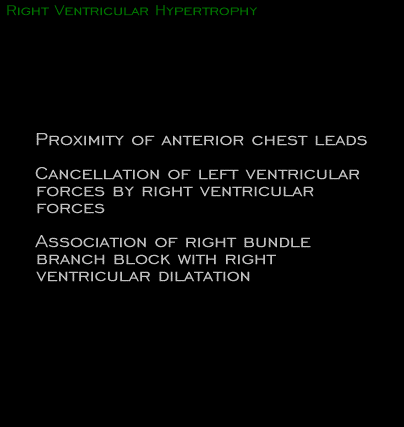
The electrocardiographic changes associated with right ventricular hypertrophy are influenced by three factors that do not apply to the left ventricle. These are listed here and include:
- The proximity of leads V1 and V2, the anterior chest leads, to the right ventricle.
- The recognition that an increase in right ventricular forces could cancel the more dominant leftward and posterior left ventricular forces rather than causing more obvious rightward and anterior forces.
- The association of right bundle branch block with right ventricular dilatation. This is probably caused by stretching of the right bundle branch as is crosses from the interventricular septum to the right ventricular free wall on the moderator band.
